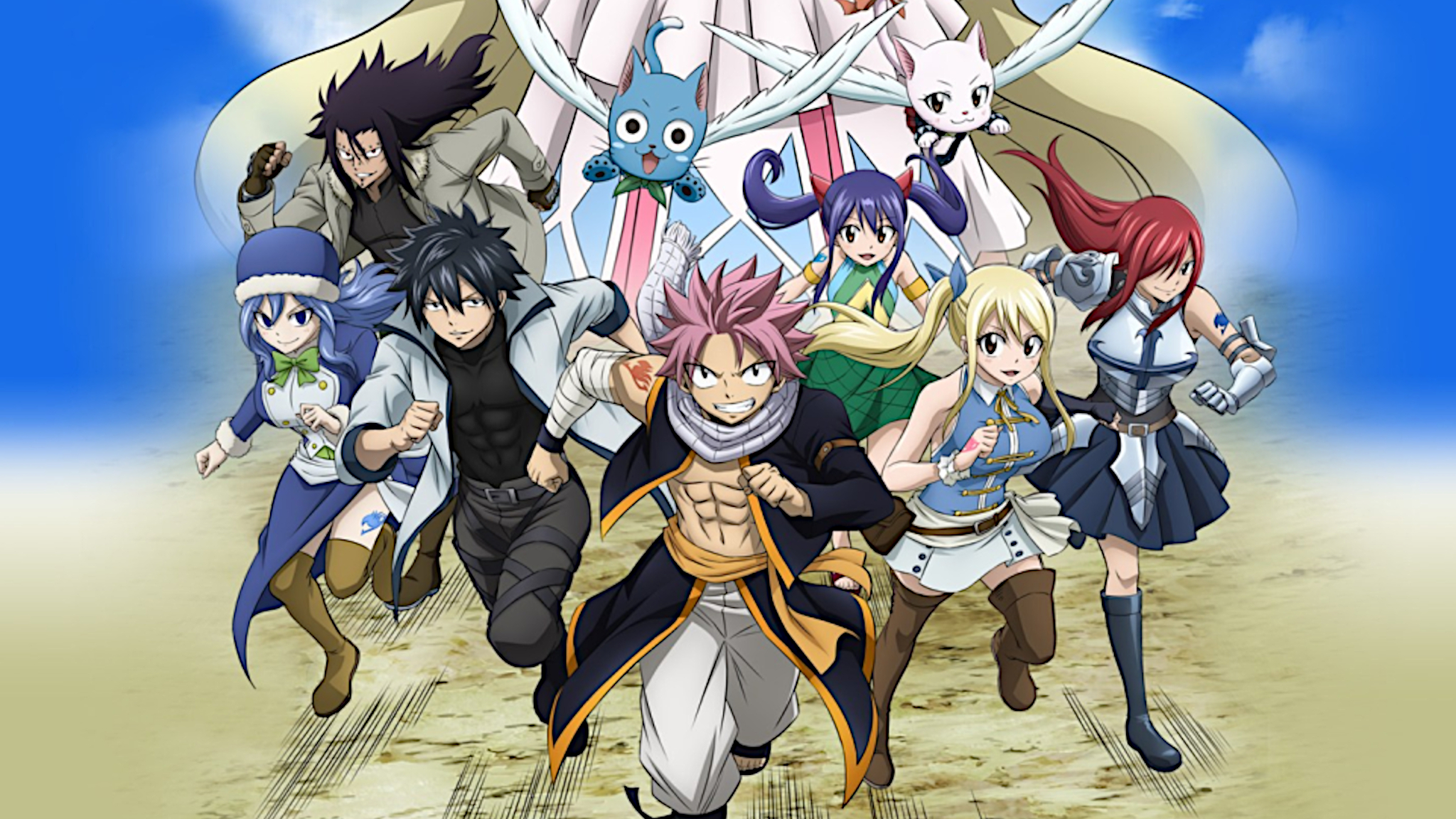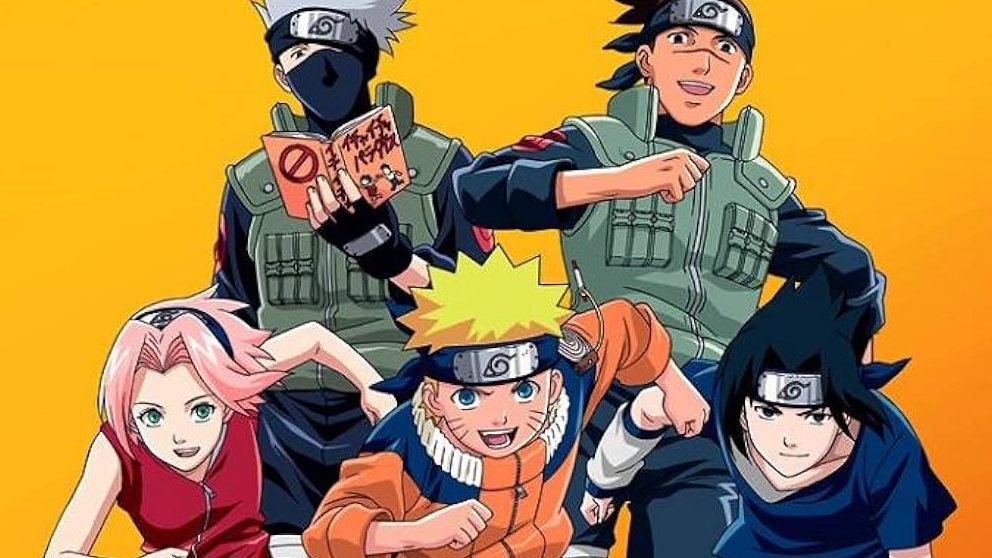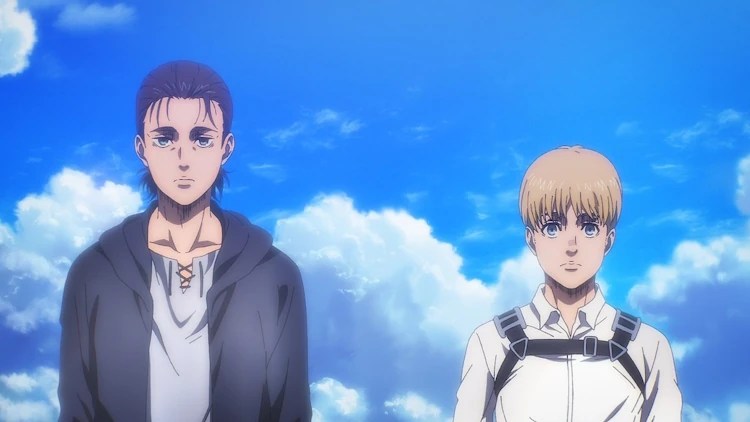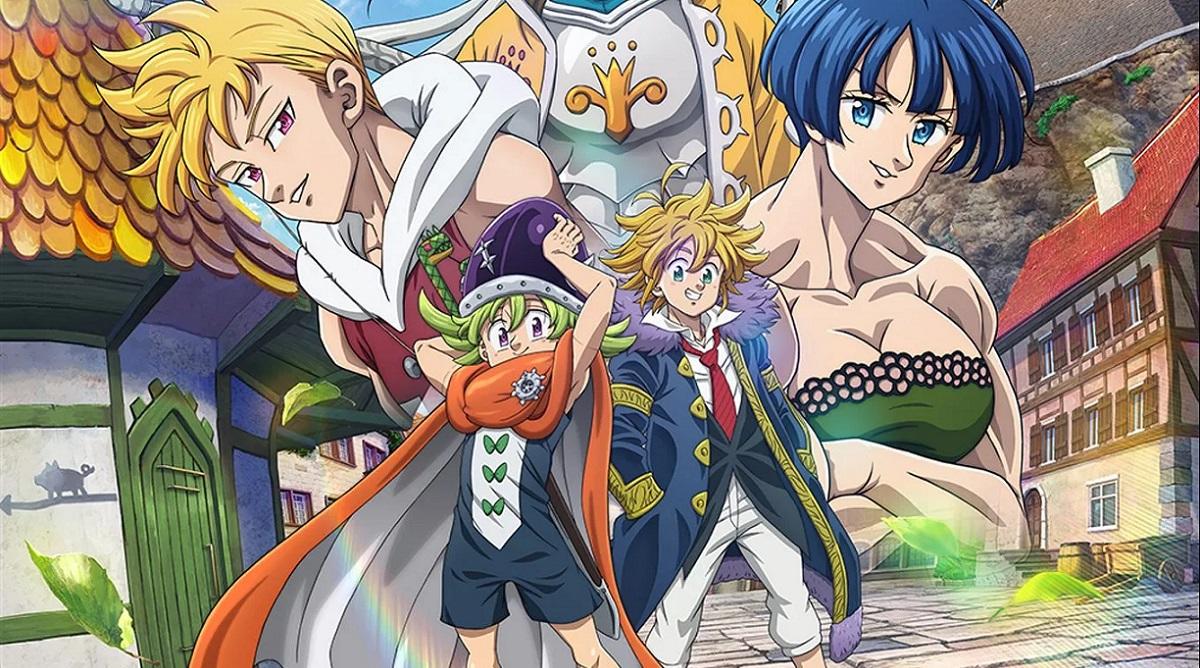
As an observer, I can attest that “One Piece” stands as a colossal cultural influence, captivating audiences since its inception in 1999. The narrative follows the journey of Luffy and his motley crew as they traverse the seas in pursuit of dreams, forging bonds reminiscent of family. This series has significantly reshaped the perception of adventure stories within anime. Across the globe, “One Piece” has spawned legions of artists, writers, and fans who have been inspired by its timeless themes of camaraderie, liberty, and relentless perseverance. Numerous contemporary shows have drawn from these same themes, reflecting their enduring resonance. The characters, imaginative world-building, and emotional complexity set a lofty benchmark, continually surprising us with the many mysteries it weaves or the hidden depths of its key players. With “One Piece,” you share in the laughter, tears, and growth of its characters, all while exploring a universe brimming with enigmatic islands, formidable adversaries, and rich history.
Over the years, many viewers have shared a voyage with the series One Piece, and it continues to thrive after more than a thousand episodes due to its emphasis on the importance of camaraderie as the true treasure. While not the only show of its kind, One Piece‘s immense popularity has inspired numerous other anime to emulate its success. Series like Fairy Tail, Naruto, and newer productions have all drawn upon the essence of One Piece. If you found something unique in One Piece, these ten shows, each with their own distinct take on adventure, emotion, and unbreakable bonds, will keep that feeling alive for you. They may not replicate the Straw Hat crew’s adventures, but they offer a journey worth embarking on.
1) Fairy Tail

If you’re a fan of “One Piece”, then “Fairy Tail” might be your next favorite. Both stories revolve around close-knit teams embarking on extraordinary journeys. Characters like Natsu resemble Luffy in terms of his boisterousness, loyalty, and impulsiveness, but he’s willing to go to great lengths to safeguard his people. Lucy shares some similarities with Nami in terms of charm and resourcefulness, while Gray and Zoro have that calm, powerful demeanor in common. Even the characters Happy and Chopper play a role as adorable companions, much like their counterparts. The concept of “nakama”, or strong bonds, is deeply ingrained in both series. In “Fairy Tail”, strength comes from connections. Just like Luffy’s crew fights for each other, the mages in “Fairy Tail” grow stronger when their friends are at stake.
In more straightforward terms, their resemblance extends beyond just characters. The art styles share a common feel because the creators behind them were both inspired by Akira Toriyama’s Dragon Ball. This influence is evident in the distinctive designs, animated facial expressions, and lively energy that characterize both series. Humor is another key element, with both shows blending exaggerated comedy with deep emotional journeys and intense conflicts. Whether it’s guild missions or pirate adventures, big emotions, high-stakes situations, and memorable moments define the essence of both productions. Although One Piece continues to unfold, Fairy Tail offers a complete story that concludes satisfactorily.
2) Hunter x Hunter

If you enjoyed “One Piece,” I’d recommend giving “Hunter x Hunter” a try. Similar to the former, this story revolves around a young lad pursuing a dream – Luffy aims to become the Pirate King, while Gon strives to find his father. Both characters are courageous, lively, and compassionate. They encounter numerous individuals on their adventures, some of whom eventually become cherished friends. Just as the Straw Hats form a close-knit family, Gon’s companions, Killua, Kurapika, and Leorio, share this bond. Each friend has individual ambitions and distinct abilities that contribute to their growth. The narrative is fraught with peril, but it also offers significant character development.
Speaking as a passionate fan, these two shows, “One Piece” and “Hunter x Hunter,” take me on an extraordinary journey through intriguing worlds filled with bizarre landscapes, formidable adversaries, and intelligent power dynamics. “One Piece” brings Devil Fruits to the table, while “Hunter x Hunter” introduces Nen. Instead of mindless action, these shows challenge you to engage your brain, as battles are not just about physical combat but also strategy and emotion. Even side characters get their moment in the spotlight.
Starting off light-hearted and humorous, these stories gradually darken, yet the core message remains the same: stand by your comrades, never give up, and keep pursuing your dreams. If “One Piece” made me laugh, cry, and cheer, “Hunter x Hunter” promises to do the same.
3) Naruto

In the world of Shinobi, Naruto presents us with a solitary outcast who transforms into a figure revered by all. Initially, he’s met with scorn, indifference, and disregard. Yet much like Luffy, Naruto persists. He never gives up. He never stops caring. If you found joy in witnessing Luffy unite people, you’re sure to appreciate watching Naruto gradually convert adversaries into allies and foes into friends.
In contrast to the expansive, adventurous seas of One Piece, the world of Naruto seems more intimate and emotionally charged. Here, we witness recurring themes of conflict, family heritage, and self-sacrifice that span generations. While Luffy bravely embraces the unknown with a grin, Naruto bears the burden of his past. The fights in Naruto are intense, impactful, and at times, excruciatingly painful. At its heart, Naruto isn’t just about combat; it’s about healing – yourself, your community, and even those who sought to harm you. Though the journey may differ, Naruto delivers an equally powerful punch.
4) Gintama

If you enjoyed the humor, action, and camaraderie in “One Piece”, then “Gintama” could be your next favorite watch. It’s filled with lots of laugh-out-loud comedy, with jokes that are frequently absurd and unpredictable. The wit is quick, but when it gets serious, the show has a knack for tugging at your heartstrings. Similar to Luffy, Gintoki might appear lazy and carefree, but when duty calls, he steps up to the plate and delivers. Both anime boast large casts with complex narratives, formidable villains, and unexpected emotional intensity. While they may initially seem light-hearted, they know exactly how to pack a punch when it counts.
From my perspective, Gintama doesn’t adhere to a singular objective like One Piece‘s search for the legendary treasure. Instead, it presents an array of smaller tales that gradually coalesce into something grander. The series initially offers light-hearted comedy, but as you delve deeper, you realize its depth. The characters are endearing, the world is filled with unexpected twists, and the humor evolves consistently. Both shows reward your loyalty. If you’ve appreciated the samurai setting of the Wano arc or enjoy intricate world-building with a twist, Gintama resonates in the most delightful way.
5) Magi: The Labyrinth of Magic

Magi, much like One Piece, revolves around pursuing dreams and finding one’s companions. Aladdin, a compassionate boy in this series, embarks on an exciting journey through a mystical realm. As he encounters various friends, battles formidable adversaries, and assists others in personal growth, parallels can be drawn with Luffy. Both characters share kindness, courage, and unwavering commitment to justice. Many of the Magi characters carry heavy pasts, and their journey towards strength and unity is a significant part of what makes the narrative so captivating.
Similar to “One Piece”, “Magi” boasts impressive world-construction. The narrative journeys through urban landscapes, kingdoms, and deserts, each with their unique laws and past. It’s filled with magical artifacts, potent weapons, and intriguing enigmas that unravel gradually. Though it takes time to develop, the reward is definitely commensurate. Both series share a blend of somber moments with humor and laughter. They also excel in group dynamics and deep-seated friendships. Moreover, they both illustrate how a handful of virtuous individuals can shape their surroundings significantly.
6) The Law of Ueki

The story of Ueki revolves around a gentle and tranquil boy named Ueki, who finds himself participating in an unusual tournament. Every competitor receives a peculiar ability. Uniquely, Ueki’s talent lies in transforming waste into trees. Initially, it may seem preposterous, but much like the Devil Fruits in One Piece, the true might lies in the cleverness of its application. As events unfold, Ueki gradually assembles a small group that bears resemblance to the Straw Hat crew. Included among them is a quiet swordsman akin to Zoro, a witty liar similar to Usopp, a determined female character reminiscent of Nami, and a faithful and adorable mascot much like Chopper. Each member contributes their unique strengths as they navigate through challenging battles, growing stronger together.
The two series share elements of action, humor, and poignant emotional scenes. Characters exhibit genuine affection for one another, and their conflicts, though fierce, are frequently touching. “The Law of Ueki” has fewer episodes (51) compared to “One Piece,” but it maintains a similar vibe. If you appreciate stories about underdogs transforming into heroes, this series could be an excellent choice for you. Though not as widely recognized, it leaves an equally lasting impression.
7) Dragon Ball

Prior to embarking on their voyage, the Straw Hat crew captivated viewers with a glimpse of the wild, thrilling journey that anime could offer. Similarities can be drawn between these two series, as they both feature a jovial yet strong protagonist who traverses the globe, battles formidable foes, and forges deep bonds with companions. Goku and Luffy display many common traits: they are jovial, food-loving, fiercely protective of their friends, and unwavering in their pursuit of justice. The humor, enthusiasm, and emotional depth in both shows are remarkably alike.
In my perspective as an observer, it’s evident that One Piece carries a strong resemblance to Dragon Ball, considering the creator of One Piece, Eiichiro Oda, has openly admitted his affection for Dragon Ball. The similarities can be seen in the action sequences, humor, and the harmonious blending of serious moments with lighthearted ones. If you appreciated the straightforward appeal and sense of awe from the initial arcs of One Piece, then you’re bound to enjoy the timeless tale of Dragon Ball. Much like One Piece, it has a knack for making viewers feel they’re maturing alongside the characters, sharing in their victories, defeats, and emotions. For many anime enthusiasts, this was their introduction to the world of anime, and even today, it remains a worthwhile revisit.
8) Vinland Saga

In similar veins, “One Piece” and “Vinland Saga” navigate waters steeped in conflict, honor, and survival. While “One Piece” follows pirates on their quest for liberty and aspirations, “Vinland Saga” chronicles Vikings as they seek revenge, redemption, or peace. Hailing from distinct backgrounds, these tales share a common thread: the sea, which serves as a vessel for their sorrow, aspirations, and destiny. Running through both narratives is the powerful motif of honor, with figures like swordsmen, Vikings, and even giants who embody this code, living and dying by it.
In the world of One Piece, warriors from Elbaf offer prayers before battle. Similarly, in Vinland Saga, Norse fighters seek blessings from their gods before engaging in conflict. Although these belief systems differ, there’s a sense of familiarity. Additionally, both stories share a common thread with “Little Garden”, as they emphasize the importance of strength and legacy within their respective societies.
Vinland Saga offers a more measured pace and a down-to-earth approach compared to One Piece. However, it compensates by delivering profound emotions, authentic storytelling, and moments that leave lasting impressions. Similar to One Piece, it delves into the complexities of growing up in a world that can be confusing. It’s an ideal choice for viewers seeking an anime that is thought-provoking, meaningful, and yet remarkably relatable.
9) Attack on Titan

In essence, “Attack on Titan” and “One Piece” can be considered two different facets of a similar theme. One is characterized by its sharpness and tragic elements, while the other exudes wildness and a sense of wonder. Despite their contrasting tones, they share the common dream of liberty, optimism, and a world that’s worth striving for. Eren yearns to shatter the walls that confine him, while Luffy aspires to surpass every boundary the world has imposed. They confront adversaries that others deem untouchable. Their journeys are marked by the burdens and aspirations of their loved ones. They are dynamic, daring, and relentless forces that defy all obstacles placed in their path.
In a fresh and engaging manner: Both tales create vivid, living universes. Each territory has its own tale, and every character possesses their own narrative. The concepts are profound, yet the feelings they evoke run even deeper. “One Piece” emphasizes the value of pursuit, while “Attack on Titan” delves into the price of freedom. If you experienced a profound emotional response while watching “One Piece,” with a tug in your chest as characters persevered, despite the pain, then “Attack on Titan” will resonate with you similarly. Though the paths are distinct, they both tap into the same deep-seated emotions within your heart.
10) The Seven Deadly Sins

If you’re a fan of One Piece, you might find yourself drawn to the adventures of The Seven Deadly Sins. Similar to One Piece, these series begin with lighthearted scenes in a tavern that quickly escalate into chaos. The protagonists are free-spirited, brave, and deeply devoted to their companions. Meliodas, much like Luffy, heads a band of outcasts with immense strength, big hearts, and unique talents, each with a troubled past. They journey together, encounter new people, and battle for their convictions. Despite being pursued relentlessly, they never slow down or lose hope. Initially humorous and vibrant, the storyline unfolds to reveal deeper, darker themes.
Both anime series create intricate, immersive universes – one filled with pirates, islands, knights, demons, and magic; the other brimming with piracy, knighthood, and magical elements. Despite the differences in setting, they share a common theme – stories centered around friendship, loyalty, and grand aspirations. As the teams journey together, both series offer intense battles and moments of high emotion, humor, and adventure. The artwork is vibrant and dynamic, making these shows perfect for those seeking increased action, laughter, and heartfelt camaraderie reminiscent of “One Piece.” If you’re in search of such elements, “The Seven Deadly Sins” comes highly recommended.
https://comicbook.com/anime/news/one-piece-secret-warlord-hanafuda-anime/embed/#
Read More
- Ashes of Creation Rogue Guide for Beginners
- Best Controller Settings for ARC Raiders
- ARC Raiders – All NEW Quest Locations & How to Complete Them in Cold Snap
- Bitcoin’s Wild Ride: Yen’s Surprise Twist 🌪️💰
- Netflix’s One Piece Season 2 Will Likely Follow the First Season’s Most Controversial Plot
- Eldegarde, formerly Legacy: Steel & Sorcery, launches January 21, 2026
- PICROSS S SNK Classics & NEOGEO edition announced for Switch
- Two Trails beyond the Horizon Demos Out Now, and One Is Exclusive to PS5, PS4
- Rules of Engagement: The Grey State Is a Brutal Mix of Strategy and Survival
- Everything You Need to Know Before ‘Fantastic Four: First Steps’
2025-07-07 01:11